- May 16, 2024
Train Parrot Not to Bite: 10 Techniques for Friendly Bond
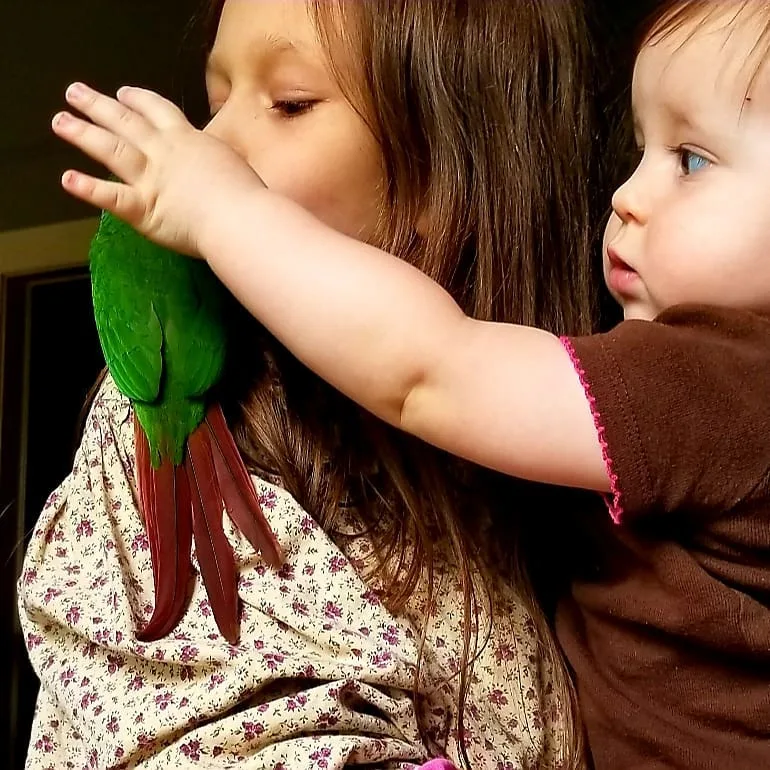

Want your parrot to stop biting? We’ve got you covered. Discover effective methods to train your pet birds, companion parrots, and many parrots, learning to build a stronger bond. From positive reinforcement techniques to socialization tips, we’ll help you nip that biting behavior in the bud. Plus, learn how to read your parrot’s body language for better communication with birds.
Ready to transform your parrot into a well-behaved companion? Scroll down for reviews of our top picks!
Explore our selection of vibrant parrots for sale. Adopt a healthy parrot today!
-
Sale Product on sale
 My Name is CODY, Male Talking Congo African Grey. 20% Off Today – Don’t Miss Out!
My Name is CODY, Male Talking Congo African Grey. 20% Off Today – Don’t Miss Out!$1,600.00Original price was: $1,600.00.$1,400.00Current price is: $1,400.00. -
Sale Product on sale

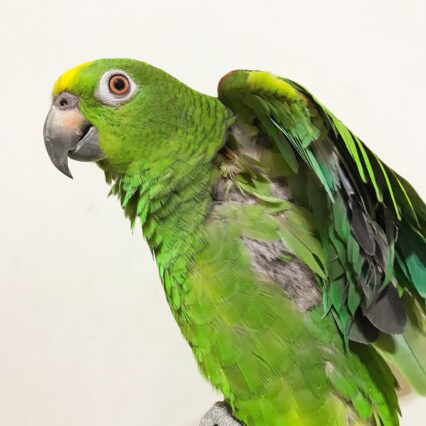 Buy GEZAIII, Female Yellow Crowned Amazon Parrot. 20% Off Today – Don’t Miss Out! Limited Time:
Buy GEZAIII, Female Yellow Crowned Amazon Parrot. 20% Off Today – Don’t Miss Out! Limited Time:$1,600.00Original price was: $1,600.00.$1,400.00Current price is: $1,400.00. -
Sale Product on sale

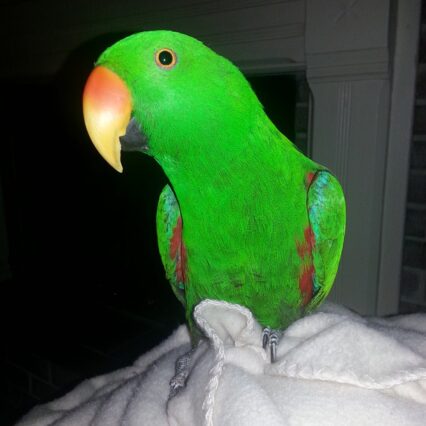 Buy LAGO, Female Electus. 20% Off Today – Don’t Miss Out! Limited Time:
Buy LAGO, Female Electus. 20% Off Today – Don’t Miss Out! Limited Time:$1,100.00Original price was: $1,100.00.$900.00Current price is: $900.00.
Key Takeaways
- Use positive reinforcement techniques like treats and praise to train your parrot not to bite.
- Allow your parrot to socialize with other parrots to learn appropriate behavior.
- Avoid using punishment methods as they can harm the trust between you and your parrot.
- Identify what triggers your parrot, bird, to bite and work on addressing those issues.
- Maintain a consistent training schedule to reinforce good behavior.
- Provide interactive toys to keep your parrot mentally stimulated and engaged.
1. Positive Reinforcement Training
Positive reinforcement training is a highly effective method for teaching parrots desirable behaviors and reducing biting incidents. By using clicker training in combination with favorite treats, you can effectively reinforce positive actions in your parrot. This technique involves associating the sound of a clicker with receiving a treat, helping the bird understand which behaviors are desirable.
Incorporating verbal praise along with treats, like food, further reinforces the desired behaviors, making the learning process more effective. Veterinary technicians and experienced trainers recommend this approach to train parrots as it focuses on rewarding good behavior rather than punishing undesirable actions. Consistency in rewarding good behavior is key to seeing an increase in the right actions from your parrot.
2. Socialization with Other Birds
ializing pet birds with other birds, especially companion parrots, is crucial for their well-being. Here’s how to facilitate this interaction effectively:
- Arrange supervised playdates with other birds to promote socialization.
- Encourage positive interactions by allowing the birds to communicate and form a bond.
- Monitor body language cues to ensure safe and enjoyable socialization experiences.
This process helps in developing pair bonds, enhancing their cognitive abilities, and reducing behavioral issues like aggression or loneliness. Many people have shared stories of how socializing their birds positively impacted their lives. By providing opportunities for your bird to interact with others, you contribute to their overall happiness and mental stimulation.
3. Avoid Punishment Techniques
Redirecting your parrot’s behavior towards positive actions is key to preventing biting incidents. Instead of punishment, opt for redirection to foster a positive learning environment. By focusing on rewarding good behavior, you reinforce desired actions and discourage biting tendencies effectively. Implementing time-outs or distractions can help in redirecting your parrot’s attention away from negative behaviors without resorting to punitive measures.
- Redirection: Guide your parrot towards appropriate toys or activities when you notice signs of aggression.
- Positive Reinforcement: Reward your parrot with treats or praise when it displays non-biting behavior.
- Time-Outs: Give your parrot, bird, a short break in a separate area to calm down after a biting episode.
4. Identify Triggers for Biting
Understanding the triggers that lead your parrot to bite is crucial in addressing this behavior effectively. Observing and analyzing the circumstances surrounding a biting incident can provide valuable insights into the reasons behind it. Pay close attention to body language cues, such as flattened feathers or dilated pupils, that may signal an impending bite. By keeping a detailed log of these observations, you can track patterns and identify common triggers for biting.
- Observe specific situations or actions that provoke biting.
- Analyze body language cues preceding a biting incident.
- Maintain a log to track patterns and identify common triggers for biting.
Identifying these triggers is the first step towards modifying your parrot’s behavior and fostering a more positive interaction between you and your feathered friend.
5. Consistent Training Schedule
Establish a daily training routine to maintain consistency. Set specific training times to reinforce learning and behavior. Create a training schedule that aligns with the parrot’s natural rhythms.
- Regular training sessions help in reinforcing positive behaviors.
- Consistency is key to effectively train a parrot not to bite.
- Aligning the training schedule with the parrot’s daily routine enhances receptiveness.
6. Use Interactive Toys
Introduce a range of interactive toys to engage your parrot actively. Rotate these toys frequently to prevent monotony and promote mental stimulation. Opt for toys that align with your parrot’s natural behaviors such as chewing, foraging, and playing. These toys not only keep your parrot entertained but also help in redirecting its biting behavior towards appropriate objects. By offering a variety of interactive toys, you create an enriching environment that encourages physical activity and mental engagement for your feathered friend.
7. Respect Parrot’s Body Language
Understanding parrots’ body language is crucial for parrot owners to prevent biting incidents. Many parrots communicate their feelings through subtle cues that can help you adjust your interactions accordingly. Pay attention to signals of discomfort or stress, such as flattened body posture or pinned eyes, to avoid potential bites.
When a parrot leans away from you on a perch or turns its back, it may indicate a lack of interest or discomfort. Respect these cues by giving the bird space and time to feel at ease. Observe if the parrot’s feathers are raised, which could signal agitation.
8. Create a Safe Environment
Creating a safe environment for your parrot is crucial to prevent biting and ensure its well-being.
- Eliminate hazards: Parrot-proof the living space by removing toxic plants, sharp objects, and small items that can be ingested.
- Comfortable setting: Provide a secure cage setup with appropriate perches, toys, and bedding materials for your parrot’s physical comfort.
- Psychological well-being: Ensure the environment promotes mental stimulation through interactive toys, varied perches, and access to natural light.
9. Encourage Gentle Interactions
To build trust with your parrot and prevent biting, focus on gentle handling techniques. Approach your feathered friend with patience and sensitivity to establish a positive relationship. Encourage soft touches and maintain calm interactions to promote a sense of security and comfort for your parrot.
Creating a bond based on mutual respect and understanding is key to reducing instances of biting. By prioritizing gentle interactions, you can effectively communicate to your parrot that they are safe in your presence. Remember, parrots are highly intelligent creatures that respond well to positive reinforcement and nurturing gestures.
10. Seek Professional Help if Needed
For complex behavioral issues, it is advisable to consult with a certified avian behaviorist who possesses specialized knowledge in addressing parrot behavior. These professionals can offer expert guidance tailored to your bird’s specific needs and challenges. Reaching out to a veterinarian experienced in bird behavior can provide valuable insights into tackling biting problems effectively.
Professional training services are also available for parrot owners facing persistent biting behaviors that require specialized attention. These services can offer structured programs and techniques to address the root causes of biting and implement effective solutions.
When dealing with challenging parrot behaviors like biting, seeking professional help ensures that you receive comprehensive support and guidance to create a safe and harmonious environment for both you and your feathered companion.
Summary
In your journey to train your parrot not to bite, remember that positive reinforcement and socialization are key. Avoid punishment techniques, identify triggers, and maintain a consistent training schedule. Interactive toys, respect for body language, and a safe environment will aid in the process. Encourage gentle interactions and seek professional help if necessary. Your efforts will create a harmonious bond with your feathered friend, leading to a happier and healthier relationship.
Take these tips to heart and implement them consistently. With patience and dedication, you can successfully train your parrot not to bite. Your efforts will be rewarded with a well-behaved and content companion. Start applying these strategies today and watch as your parrot transforms into a delightful addition to your household.
Explore our selection of vibrant parrots for sale. Adopt a healthy parrot today!
-
Sale Product on sale

 My Name is YOSHI & WINNIE, Male & Female Pionus. 20% Off Today – Don’t Miss Out!
My Name is YOSHI & WINNIE, Male & Female Pionus. 20% Off Today – Don’t Miss Out!$800.00Original price was: $800.00.$600.00Current price is: $600.00. -
Sale Product on sale

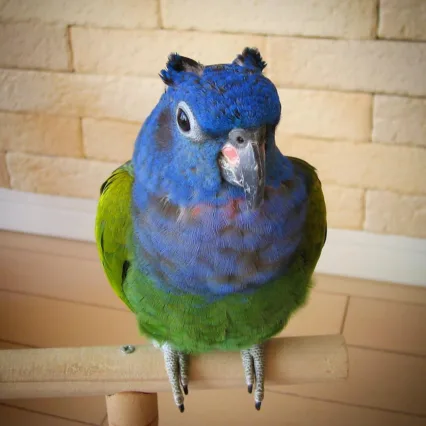 My Name is YACA, Female blue headed Pionus. 20% Off Today – Don’t Miss Out!
My Name is YACA, Female blue headed Pionus. 20% Off Today – Don’t Miss Out!$800.00Original price was: $800.00.$600.00Current price is: $600.00. -
Sale Product on sale

 My Name is WIZZY, Male Quaker. 20% Off Today – Don’t Miss Out!
My Name is WIZZY, Male Quaker. 20% Off Today – Don’t Miss Out!$750.00Original price was: $750.00.$600.00Current price is: $600.00.
Frequently Asked Questions
How can positive reinforcement training help in preventing a parrot from biting?
Positive reinforcement training involves rewarding good behavior, encouraging the parrot to repeat desirable actions. By rewarding non-biting behaviors with treats or praise, the parrot learns that gentle interactions are rewarded, reducing the likelihood of biting.
What are some common triggers for parrots that lead to biting behavior?
Common triggers include feeling threatened, stressed, scared, or territorial. Understanding these triggers can help you identify situations where your parrot is more likely to bite and take steps to mitigate them through training and environmental adjustments.
How can interactive toys assist in training a parrot not to bite?
Interactive toys provide mental stimulation and enrichment for parrots, keeping them engaged and occupied. By redirecting their focus onto toys designed for chewing, shredding, or problem-solving, you can help alleviate boredom and reduce the likelihood of aggressive behaviors like biting.
Tags
What do you think?
Related Articles
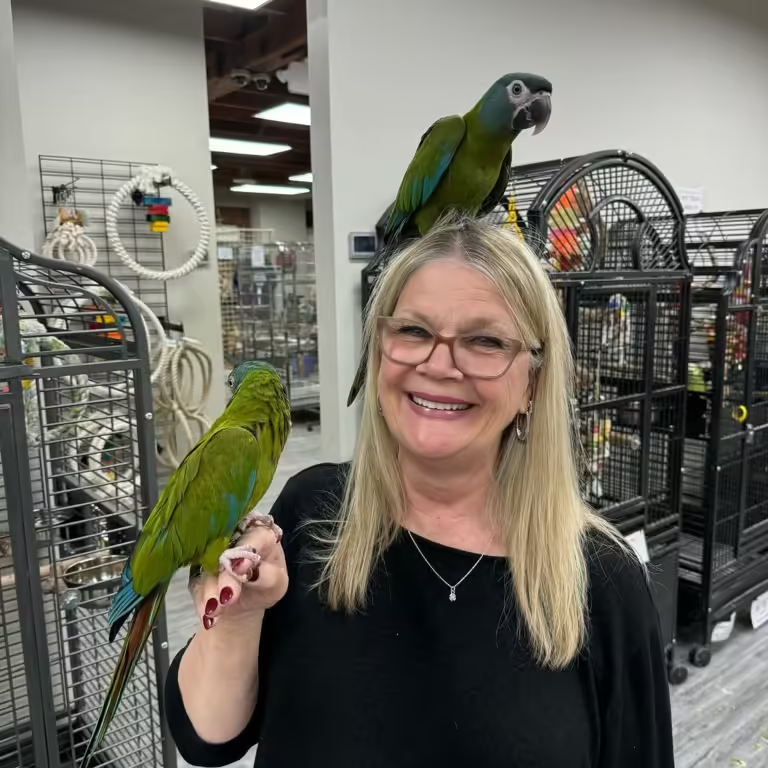
Find Parrots for Sale in Aurora IL: Top 5 Must-Visit Spots
Finding the perfect parrot in Aurora, IL, is an exciting adventure for bird lovers. This city offers various options for finding your ideal feathered friend,
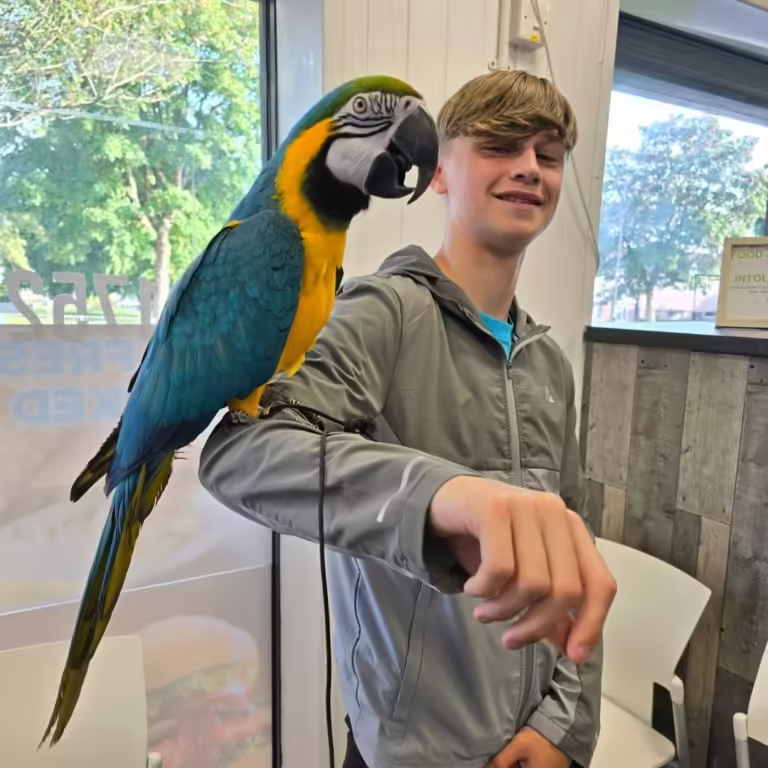
Find Parrots for Sale in Trenton NJ: Top 5 Must-See Spots!
Finding the perfect parrot can be a fun adventure. Trenton, NJ, offers plenty of options for bird lovers. From local breeders to pet shops, there
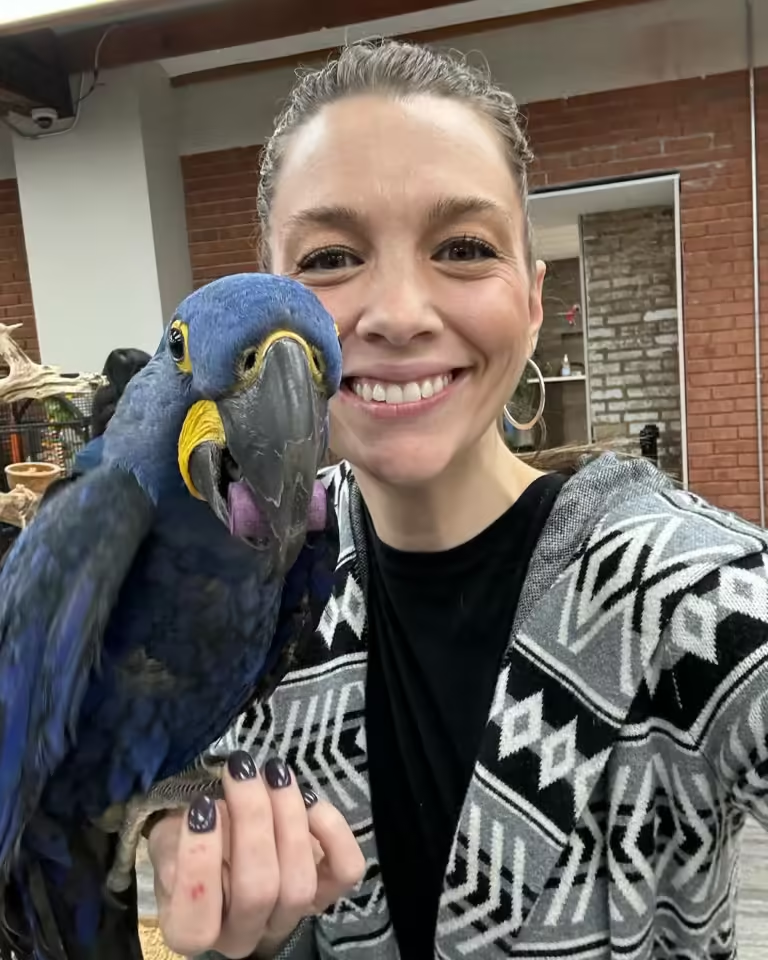
Find Parrots for Sale in Woodbridge Township NJ: Top 5 Must-See Spots!
Finding the perfect parrot can be a fun adventure. Woodbridge Township, NJ offers plenty of options for bird lovers. From local breeders to pet shops,

